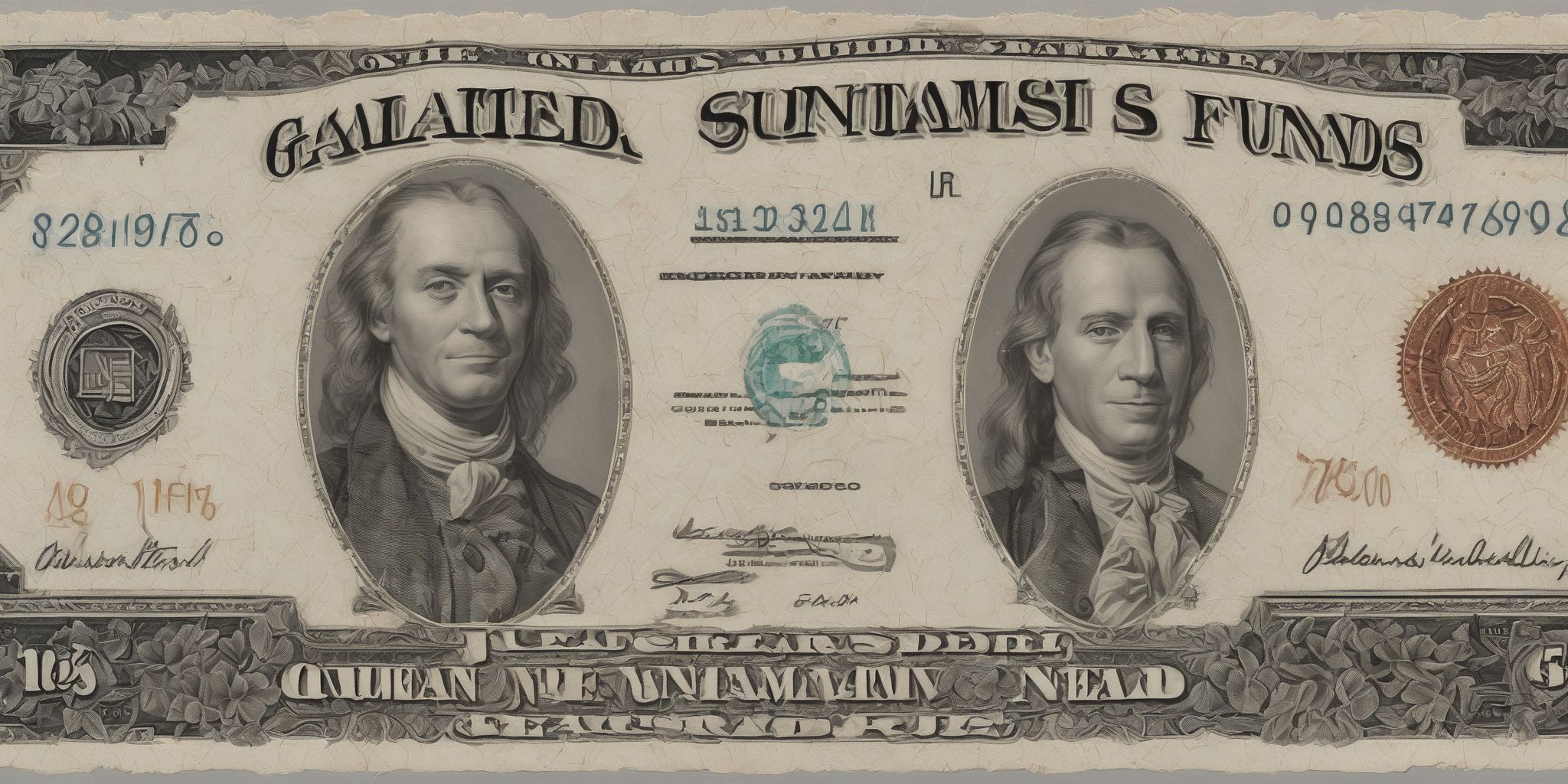What is a Capital Asset?
Capital assets are valuable items like property, equipment, or investments owned by a company or individual to make a profit. They can increase in value and are held for a long time. Knowing what counts as a capital asset is vital for financial management. Let's delve into capital assets and their role in planning for the future.
Definition of Capital Asset
Tangible Assets as Capital Assets
Tangible assets are things like machinery, property, or inventory. They become capital assets if they're held for a long time for investment, not short-term profit.
To decide if something is a capital asset, we look at factors like expected return, potential for gain or loss, and contribution to the company's value.
When tangible assets are seen as capital assets, they can have a big impact on a company's balance sheet and financial choices. Keeping these assets long-term might mean businesses pay less in capital gains taxes, which are usually lower than regular income tax rates.
The IRS has specific rules on capital assets and taxes, found on Form 1040. Knowing how tangible assets are classified as capital assets is vital for people and businesses to make the most of investments and reduce tax bills.
Intangible Assets as Capital Assets
Intangible assets, like patents, trademarks, and goodwill, are valuable for a business. They are not physical but contribute to a company's value in the long run.
Unlike tangible assets (machinery or inventory), intangible assets are long-term investments. This means they play a role in generating future economic benefits.
Taxation treats intangible assets differently than tangible assets. Capital gains from intangible assets are usually taxed at a lower rate than ordinary assets.
The IRS differentiates between short-term and long-term capital gains based on how long the asset is held. When intangible assets are sold at a profit, they may be subject to capital gains taxes.
Understanding how intangible assets are treated as capital assets is vital for making wise financial decisions for both companies and individuals.
Business Capital Assets vs. Individual Capital Assets
Distinguishing Characteristics
Business capital assets and individual capital assets have unique characteristics that distinguish them.
In business, capital assets are essential components that add value to a company. These assets include machinery, inventory, property, and fixed assets.
On the other hand, individual capital assets refer to items like a home or personal investments.
Regarding taxation, the Internal Revenue Service (IRS) treats business and individual capital assets differently. Businesses may face capital gains taxes when selling assets, affecting their finances.
In contrast, individuals may need to report capital gains or losses on their tax returns using Form 1040.
Understanding these differences in tax implications is important for making sound financial choices.
Recognizing the nuances in taxation on capital assets, whether in a business or individual context, can help navigate the market effectively.
Taxation on Business vs. Individual Capital Assets
Taxation on business capital assets differs from taxation on individual capital assets in several ways.
For businesses, capital assets like machinery, inventory, and property are subject to capital gains taxes when sold at a profit. They can also incur capital losses. Companies need to calculate the basis of the assets to determine the net capital gain or loss.
On the other hand, individuals may face taxation on capital gains from selling tangible assets like homes or investments. The IRS imposes varying tax rates on capital gains based on the holding period of the asset.
Key factors influencing the taxation treatment for businesses include the expected return on investment, market risk premium, and expected risk. Individuals, on the other hand, are affected by their income level, tax rate, and potential losses.
Regulations such as Internal Revenue Service guidelines on Form 1040 dictate how these gains and losses impact taxable income for both businesses and individuals.
Recording Capital Gains and Losses
Methods for Recording Capital Gains
When recording capital gains, there are different methods to consider:
- Calculate the gain by subtracting the asset's basis from the sales price.
- Use the fair market value of the asset at the time of sale.
- Record gains based on the original purchase price adjusted for depreciation over time.
Capital losses can offset gains, lowering the net capital gain.
This process is crucial for tax purposes and affects taxable income.
Factors like holding period, tax rate, and deductions related to the asset impact how gains are recorded.
Properly recording capital gains is important for financial decision-making and IRS compliance.
Impact of Capital Losses
Capital losses on assets like property or machinery can have significant financial implications for individuals and businesses.
When a capital asset is sold at a loss, it can decrease the overall value of an individual's investment portfolio or hinder progress towards financial goals.
Companies may also see a decrease in revenue or profitability due to capital losses on assets like inventory or fixed assets.
It's important for individuals and businesses to consider the impact of capital losses on taxable income and potential capital gains taxes.
Mitigating strategies may involve balancing investments, claiming losses on asset sales, or optimizing expenses to offset the impact of capital losses.
Understanding the implications of capital losses and making informed financial decisions can help individuals and companies navigate market risk and work towards financial stability.
Depreciation of Fixed Assets
Understanding the Process
When understanding the depreciation of fixed assets, consider factors like the asset's initial value, useful life, and chosen depreciation method. The method - straight-line or accelerated - can impact a company's financial statements.
Recording capital gains also matters. IRS guidelines tax short-term and long-term gains differently, usually taxing long-term gains at a lower rate.
Differentiating between business and individual capital assets is crucial. Businesses use depreciation to reduce taxable income, while individuals face capital gains taxes on asset sales. This understanding guides informed financial decisions on assets and investments.
Factors Affecting Depreciation
Factors affecting depreciation of fixed assets can vary. Market conditions, technology advancements, and the type of asset all play a role. Changes in market conditions, like shifts in supply and demand or economic fluctuations, can impact asset depreciation.
For example, a drop in customer demand for machinery can speed up its depreciation. Technology advancements also matter. New software or hardware can make older tech obsolete, lowering asset value. Monitoring these factors is important for businesses and individuals to make good financial decisions about assets. This helps optimize returns and reduce losses over the asset's lifecycle.
Examples of Capital Assets
Gold as a Capital Asset
Gold is a unique capital asset. It acts as a hedge against market uncertainties. Benefits and risks are associated with gold as an asset:
- Gold's intrinsic value and historical performance make it desirable for diversifying portfolios and hedging against inflation.
- However, gold prices can be volatile, resulting in both gains and losses based on market conditions.
Gold's value is influenced by factors like market risk, expected return, and risk-free rate. Though gold doesn't generate regular income, it serves as a long-term store of value.
In financial decisions, understanding the implications of holding gold is crucial. Consider factors such as tax implications, market risk premiums, and potential capital gains taxes as outlined by the IRS.
Company Acquiring Capital Assets
When a company gets capital assets, it should focus on recording and reporting gains and losses properly.
This helps ensure accurate financial statements.
Depreciation of fixed assets is important too.
Factors like useful life, salvage value, and depreciation method influence how depreciation is calculated.
Examples of capital assets are machinery, property, and inventory.
Having these assets can impact a company's financial health and performance.
Companies should think about expected returns, risks, and tax implications when holding capital assets.
Understanding how capital gains taxes, market risks, and IRS regulations affect asset valuation is crucial.
It helps companies improve financial performance and minimize losses.
Over to you
A capital asset is a long-term asset expected to benefit a business for more than one year. Examples include property, equipment, and investments.
Capital assets are not easily converted into cash and are important for a company's operations. They are recorded on a balance sheet at their original cost and depreciate over time.
Managing capital assets is important for businesses to stay financially healthy and sustainable.
FAQ
What is considered a capital asset?
Capital assets include property or investments held with the intent of gaining profits or long-term benefits, such as stocks, real estate, and equipment. These assets are typically not for sale in the regular course of business.
What are some examples of capital assets?
Examples of capital assets include real estate, machinery, equipment, vehicles, and stocks.
How are capital assets different from depreciable assets?
Capital assets include all assets with long-term useful lives, while depreciable assets specifically refer to assets that lose value over time due to depreciation. For example, buildings and land are capital assets, while machinery and equipment are depreciable assets.
Are capital assets subject to depreciation?
Yes, capital assets such as buildings, machinery, and equipment are subject to depreciation. Depreciation allows the gradual allocation of the cost of the asset over its useful life.
How are capital gains on the sale of capital assets taxed?
Capital gains on the sale of capital assets are taxed at a rate based on how long the asset was held. Short-term gains (assets held for less than a year) are taxed at ordinary income tax rates. Long-term gains (assets held for more than a year) are taxed at lower rates, typically 0%, 15%, or 20% depending on your income level.

